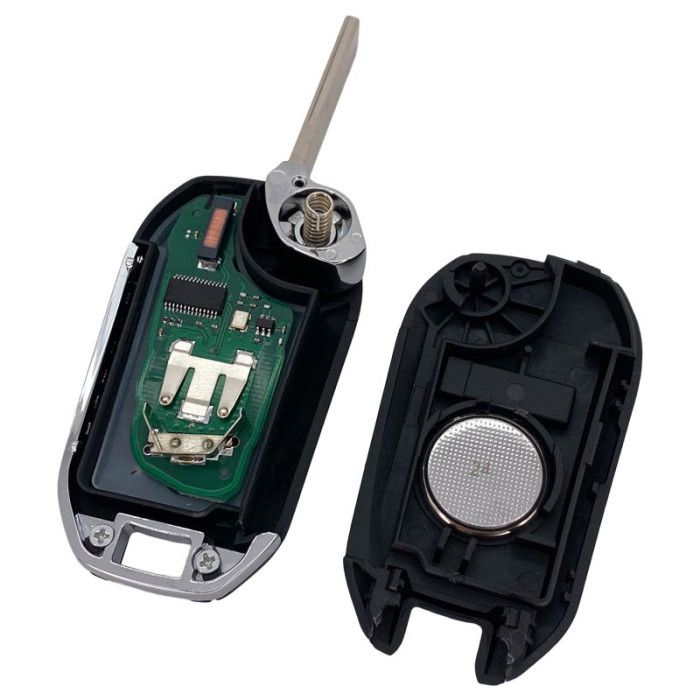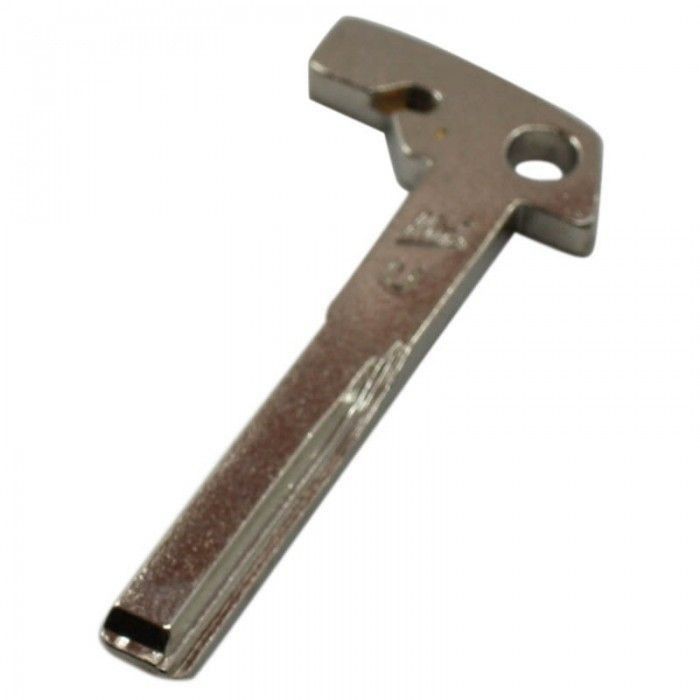Advice car keys
The housing of your car key looks like you just drove over it. Or your key blade, the iron part of your key that you insert into the ignition, falters every time you want to get your trusty four-wheeler running. The battery is dead, the microswitch isn't functioning. Or, it happens to the best of us, your car key is lost and you now only have one car key.
Don't panic. In no time you will have a spotless car key again (unless it is a spare key), as if you received it from the dealer yesterday. For a fraction of the price of a key at the dealer. Click on the category, read our advice and replace the housing, battery or entire car key yourself.
1. What does a car key consist of?
A car key consists of a housing (hard plastic) and usually has the following components: electronics, immobilizer (also called transponder), the battery and battery holder and a key blade. The key blade is the iron part that goes into the ignition switch. Some car keys do not have a key blade; most do.
|
 |
2. When should you buy a new housing?
If the push buttons are broken, the key housing is damaged, the key blade has broken in two or become detached from the housing, the glue is coming off making the smart card unusable, the electronics are broken or the spare key is lost.
Note If you replace the entire key, you will of course have to have the key blade sharpened. The same goes for reading transponders, reading and/or programming car keys or soldering microswitches. We can usually advise you which parties can help you with this.
3. What do I need?
The first question about which car key to order is whether you should order a car key at all. If you're looking for a spare key or the housing is broken, you're in the right place. But if your current key doesn't work but otherwise looks spotless, it sounds more plausible that your battery is dead, or else maybe your microswitch or transponder is broken after all. Click on the products for advice.
Still a little unsure about what's wrong? We're happy to create light in the dark. Send us an e-mail and attach a photo of the front of your key (part with push buttons), a photo of the inside of the key and a photo of the electronics.
4. Choosing the right replacement
Are you sure it's the housing, or do you need a spare key? Then it is important that you choose the right replacement of the right brand, otherwise you will not be able to use it.
We supply replacements for almost all car keys of the alphabet: Alfa Romeo, Audi, BMW, Chevrolet, Chrysler, Citroën, Dacia, Daewoo, Daihatsu, Fiat, Ford, Honda, Hyundai, Jaguar, Jeep, Kia, Land Rover, Lexus, Maserati, Mazda, Mercedes Benz, Mini, Mitsubishi, Nissan, Opel, Peugeot, Porsche, Renault, Rover, Saab, SsangYong, Seat, Skoda, Subaru, Suzuki, Smart, Toyota, Volkswagen and Volvo. Is your brand not listed? Then contact us, in many cases we can reorder the key for you through one of our suppliers.
4. Filter on the right key
Click on your car brand. On the left side of the page of your car make you will see different filters. You can filter on the type of key, the number of push buttons and whether you have a key with electronics or not. Grab your current key and hover your mouse over the question mark near the "Key Type" filter option on the left. Several pictures of the different keys will appear. Select the key type that is most similar to this. Next, you can also eliminate the number of choices by selecting the number of push buttons your key has.
Can't figure it out? If in doubt, send us an e-mail with a picture of your key, preferably also one of the inside so we can be sure which type number it is. Often we can then easily tell you which key you need and send you a link. This service is off the hook!
|
5. Car key specifications
We often use the identifiers in the title of the car key, such as the shape of the key blade and the number of push buttons.
6. Key blade (fit) shape
The key blade is the iron part that goes into the ignition of the car, to start the car. It is actually the 'old fashioned key'. We always supply an uncut key blade with the correct profile (fit). The basic profile should be the same so that the key can be cut.
|
 |
7. Push buttons
The push buttons may differ for the cars. For example, the center button may have a different function on a three-button key. One for the trunk, the other for the light, for example. So look carefully at your old key and determine which pushbutton you have. An example: At Peugeot you have a key with a middle push button for the trunk and one with a push button for a light. Doesn't detract from the operation by the way, but it might just not feel as professional if you ordered the wrong one. So pay close attention to which one you should have.
8. Housing transfer from a key with a key blade
Once you've ordered your key, you can get to work. Work on a clean and dry surface and make sure you can't lose anything! Open the old housing and carefully remove all parts. Check that you have everything: key blade (if transferable), circuit board, transponder, battery, all parts except the housing. Then get the new housing and place the transponder and circuit board into the new housing. Place the key blade in the new housing if transferable or have it sharpened at a locksmith or chop shop. It's smart to replace the battery now, too - so you can be sure to go on for a while - but you don't have to. Press the two parts of the housing together.
9. Handy Harry
Still finding it a bit daunting to unscrew your key housing yourself? Most certified locksmiths can get you started for a fee.
10. Spare key
Have you lost your key? Then you need a key with new electronics. Make sure that the electronics are included. Note that if you replace the entire key, you will need to have the key blade sharpened. This also applies to reading transponders, reading and/or programming car keys or soldering microswitches.
 Carkeyglobal.com
Carkeyglobal.com












